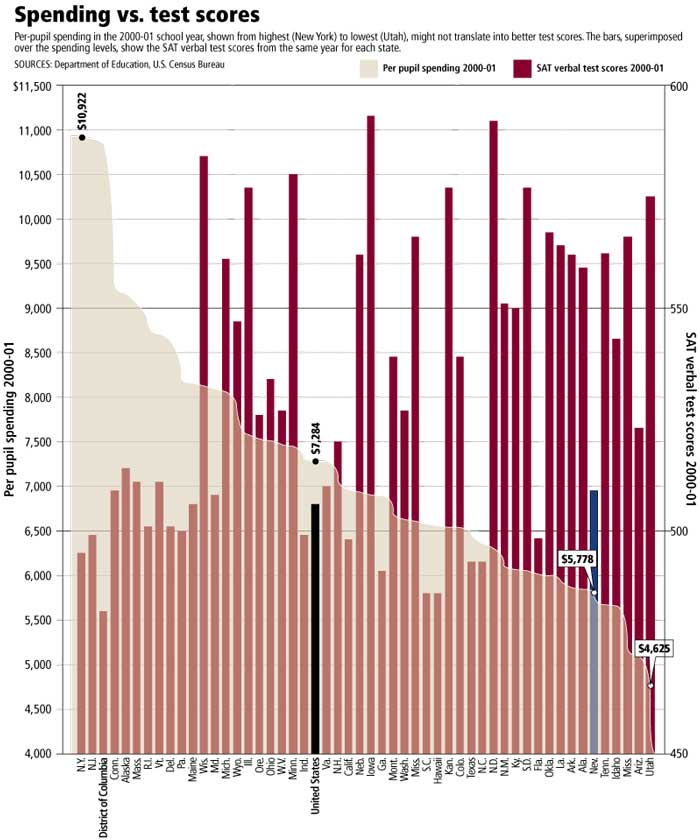Students in schools with large populations of disadvantaged students perform least well on standardized assessments. Evidence also suggests that these schools often have the least-experienced teachers (NCTAF, 1996; Roza, 2001). In effect, having standards in place emphasizes that standards are necessary but insufficient in themselves to improve student performance. Unless we change students' learning opportunities, especially for students who are ill-served by their schools, standards alone are unlikely to influence student learning. Educators and policymakers are looking for strategies that will enable students to succeed on the new assessments (thereby supporting the standards movement) and, more important, that will enhance students' learning opportunities. Small classes and small schools may be two such strategies.
Research conducted on the validity of the assertions favoring large schools has suggested that less-advantaged students end up in the largest classes, with the least-experienced teachers and the least-engaging curriculum and instructional strategies (Oakes, 1987; Wheelock, 1992). Further research suggests that schools are organized more for purposes of maintaining control than for promoting learning (McNeil, 1988).
Powell (1996) examined independent schools in the United States and learned that private preparatory schools value both small school and small class size as necessary conditions for student success. In 1998, the average private school class size was 16.6 at the elementary level and 11.6 at the high school level. By contrast, the average class size was 18.6 in public elementary schools and 14.2 in public high schools (National Center for Education Statistics, 1999).
Despite parental involvement and teachers' good intentions, it is easy for students to get lost in large classes and in large schools.
Colleagues and I recently conducted a study of small schools in Chicago. Part of our time was spent in a small school-within-a-school with eight teachers. Because they were few, they could meet together every day for an hour, work toward common agreements and understandings, and accept shared responsibility for their students. They discussed the curriculum in all subjects, agreed on instructional approaches, and tried to build as much coherence in the curriculum as they could manage. In the larger school, which had some 70 faculty members, a common agenda simply wasn't possible.Read more from the original article: http://www.ascd.org/publications/educational-leadership/feb02/vol59/num05/Small-Classes,-Small-Schools@-The-Time-Is-Now.aspx


